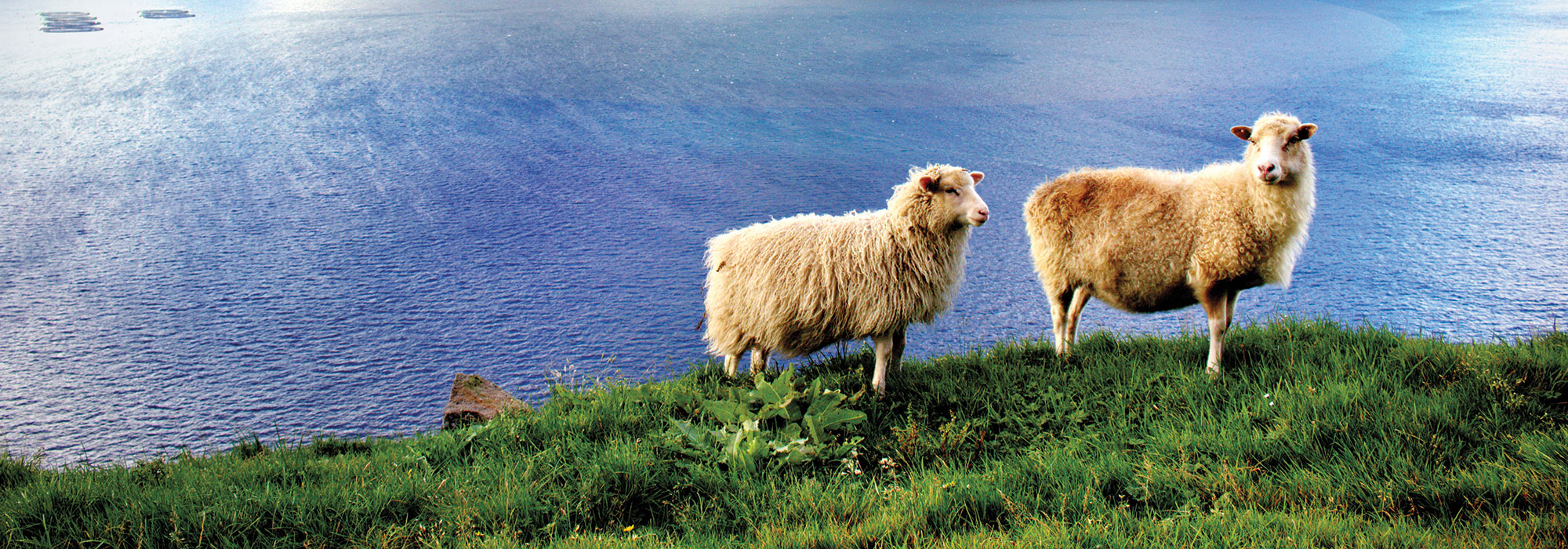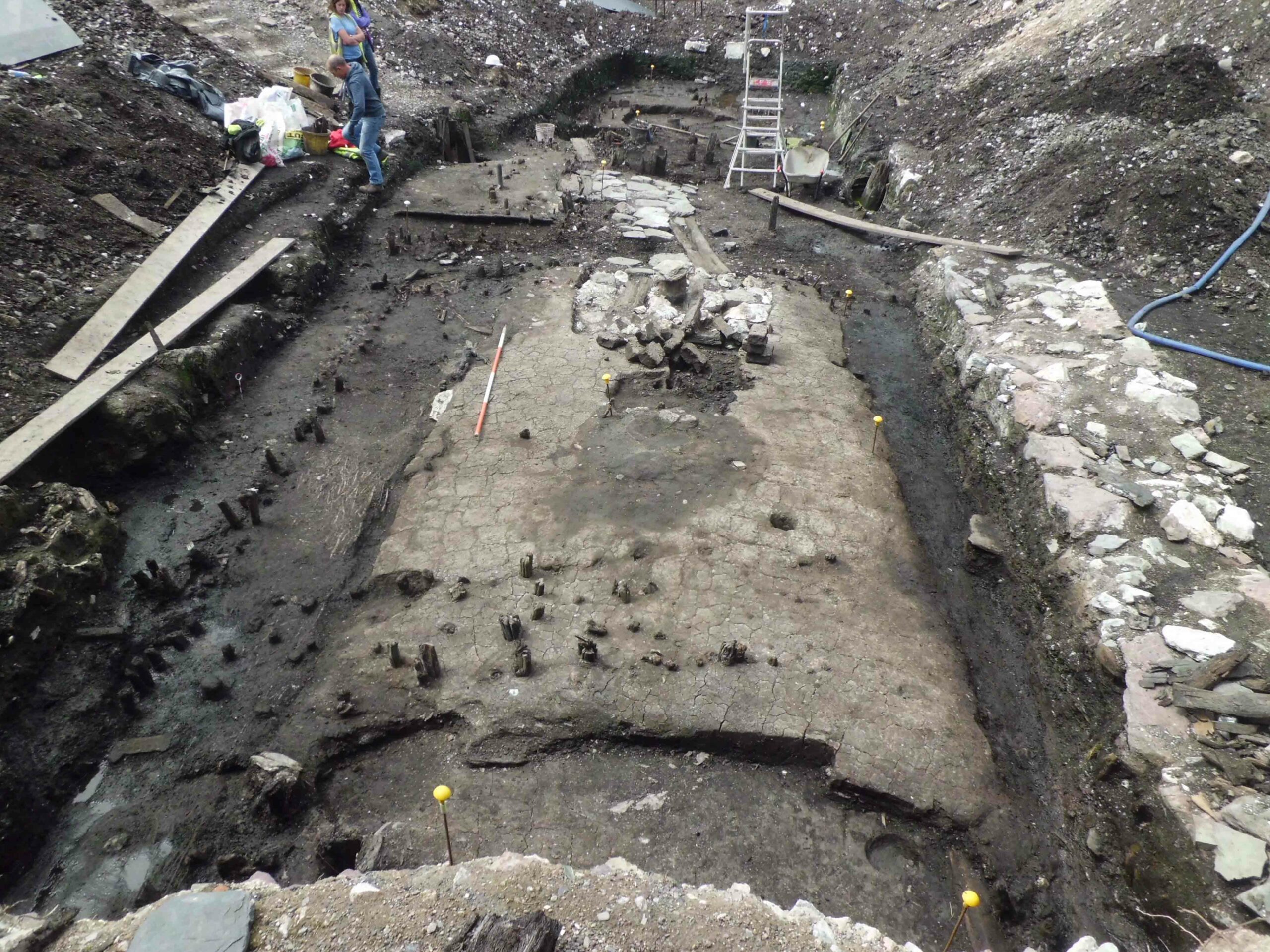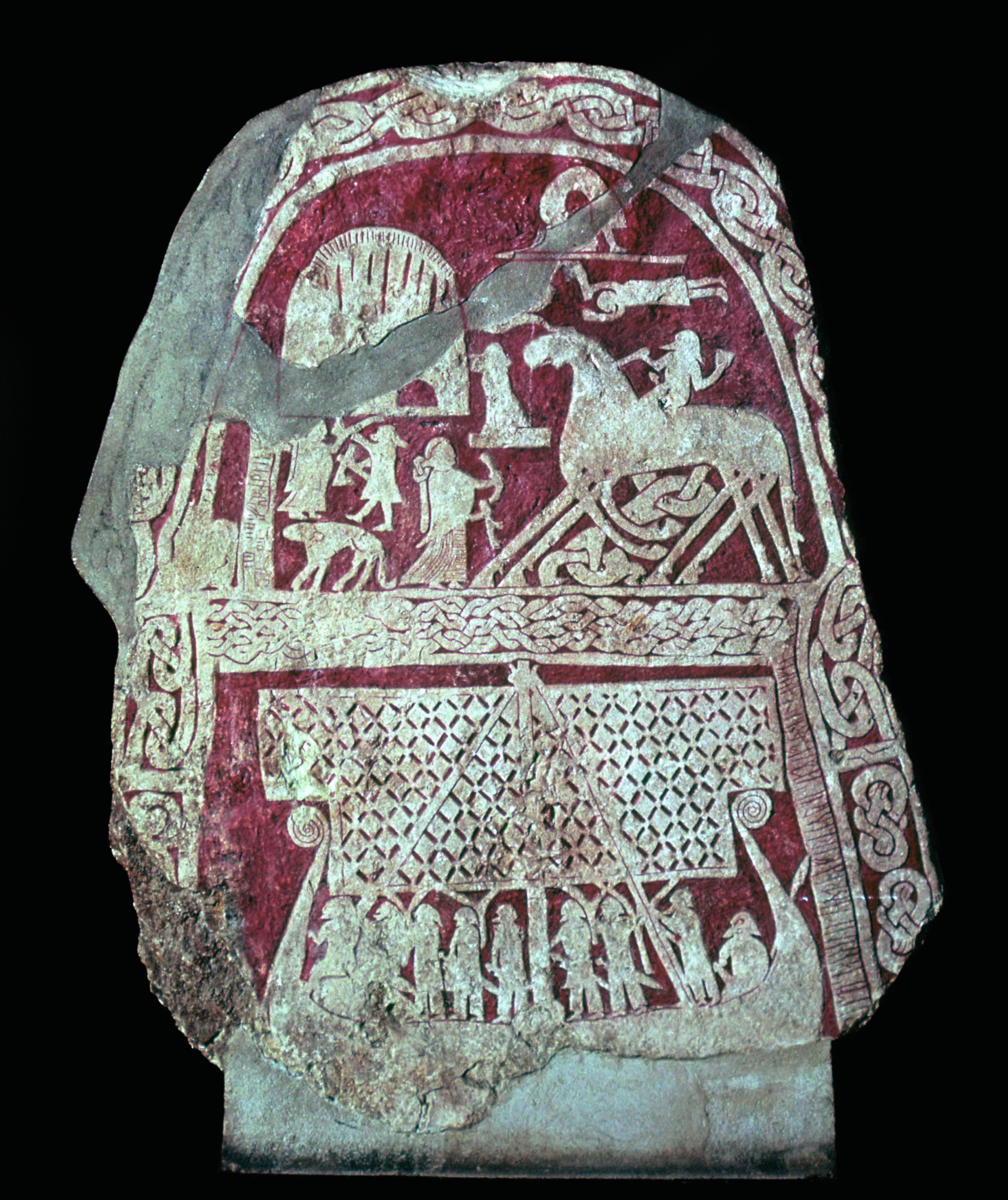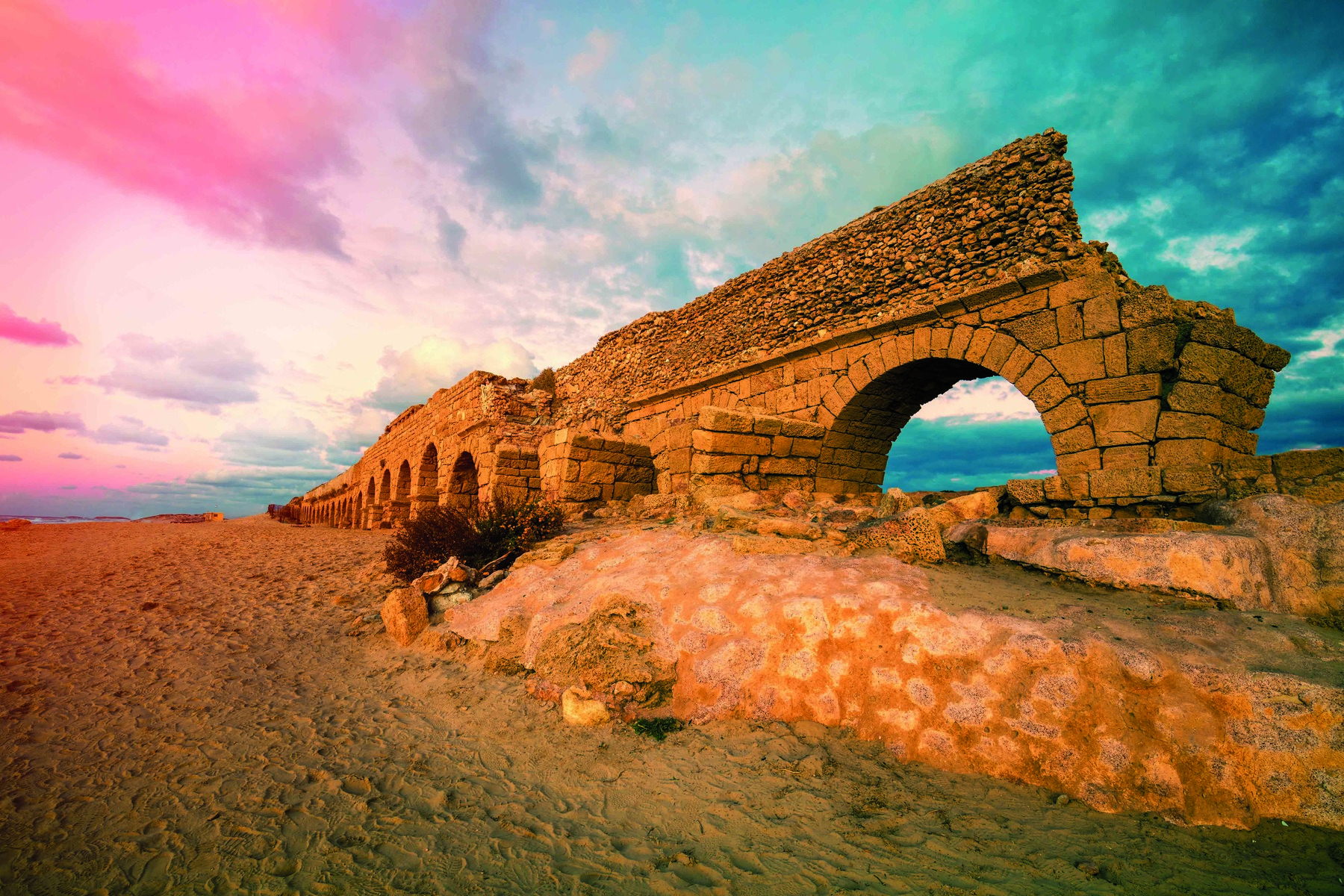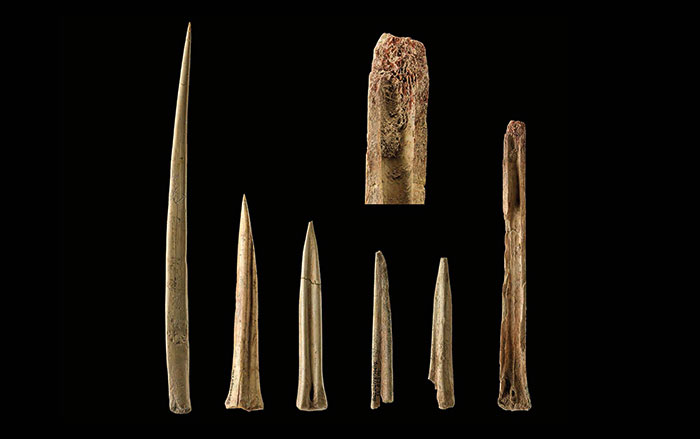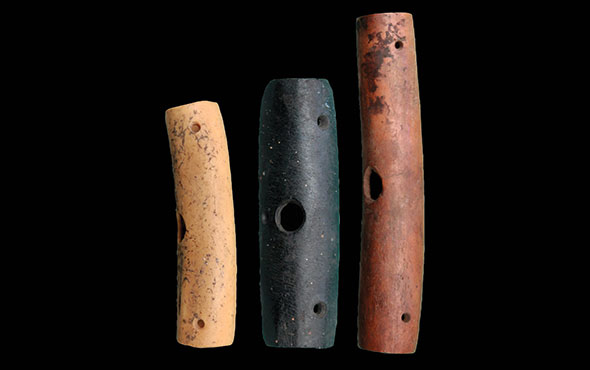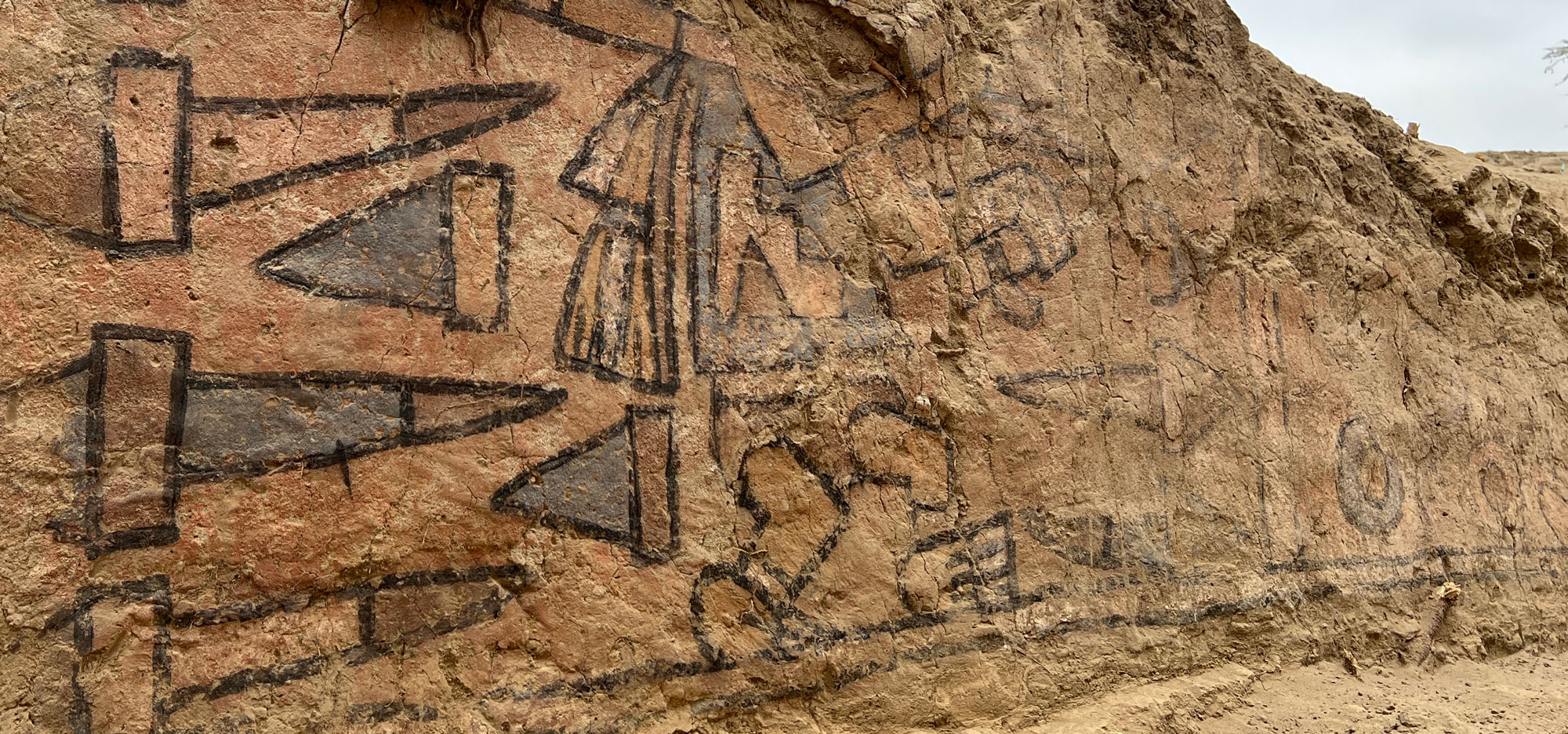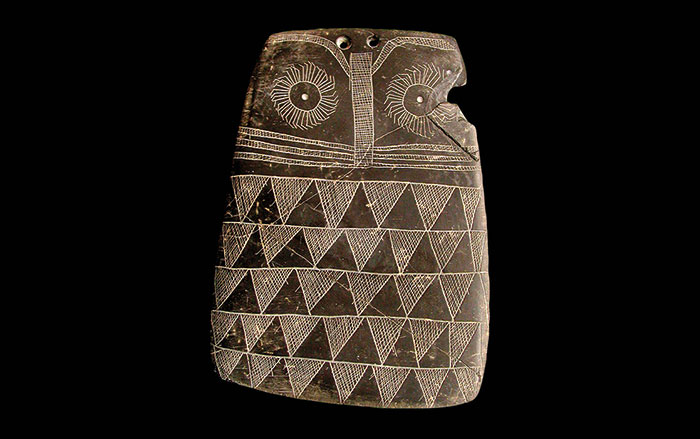
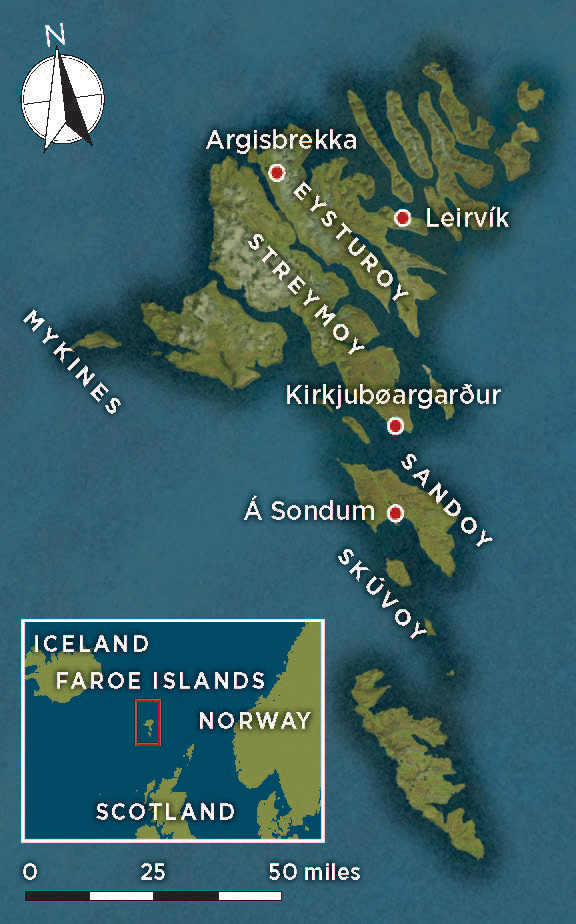
For more than 1,000 years, the jutting volcanic cliffs that dominate the coastlines of the 18 Faroe Islands have complicated life for seafarers seeking to make landfall on the archipelago. Rising from the North Atlantic some 200 miles north of Scotland, the cloudy, windswept Faroes have traditionally been home to a sparse population of farmers eking out a living by growing hardy crops on the islands’ few broad expanses of grassland—and by raising many, many sheep. Even today, sheep outnumber the islands’ population of 55,000. They have been so vital to life there that they give the archipelago its name—Faroes means “sheep islands” in the Scandinavian Faroese language.
According to Norse sagas, the Faroese people are descended from Viking settlers who first reached the Faroes in the mid-ninth century A.D. during the landnám—Old Norse for “land-take”—a time when the Vikings were just beginning to expand across the North Atlantic world. The first text written on the islands was penned under the auspices of one Bishop Erlendur. The 1298 “Sheep Letter” is a missive to the Norwegian king laying out a proposed set of rules governing sheep husbandry on the islands. Bishop Erlendur lived in a building known as Kirkjubøargarður, or the King’s Yard, which dates to the eleventh century and is said to be the oldest continuously inhabited wooden home in the world. Near the house stand the stone ruins of Magnus Cathedral, the islands’ largest medieval church and a monument to the important role Christianity played on the archipelago.
The Faroe Islands were the first stepping stone for Viking exploration of the North Atlantic. Norse navigators who stopped on the islands eventually made their way to Iceland, Greenland, and beyond, to North America. Despite the central role that the Faroes played in the history of Viking exploration, archaeological research on the islands has been relatively limited. Erosion of many areas of coastline where easy landfall was possible—and thus where settlements would have been most viable—has hampered investigation of early Viking sites. Nonetheless, two early Viking Age shielings, or farmsteads, dating to the ninth century A.D. have been extensively excavated. “Archaeology is hard in the Faroes, but we have been able to make discoveries that augment the written record,” says National Museum of the Faroe Islands archaeologist Ann Sølvia. “For instance, the texts don’t mention pigs being present in the islands, but we do find them in the archaeological record.”


Possible sources of information about the Faroes that have traditionally been ignored or downplayed by scholars are early medieval Irish accounts of exploration of the North Atlantic by ecclesiastical voyagers. The ninth-century A.D. Voyage of Saint Brendan—which describes a journey three centuries earlier—and the writings of the ninth-century A.D. Irish monk Dicuil both claim to describe Irish voyages that long predate the Viking Age to islands closely resembling the Faroes. Despite the close correspondence of the Faroes to the islands described in these accounts, historians have long dismissed them as either exaggerated tales or outright fables. “Most scholars thought these were the writings of mad Irish monks,” says University College Cork archaeologist John Sheehan. “They assumed they had no real historical value.”
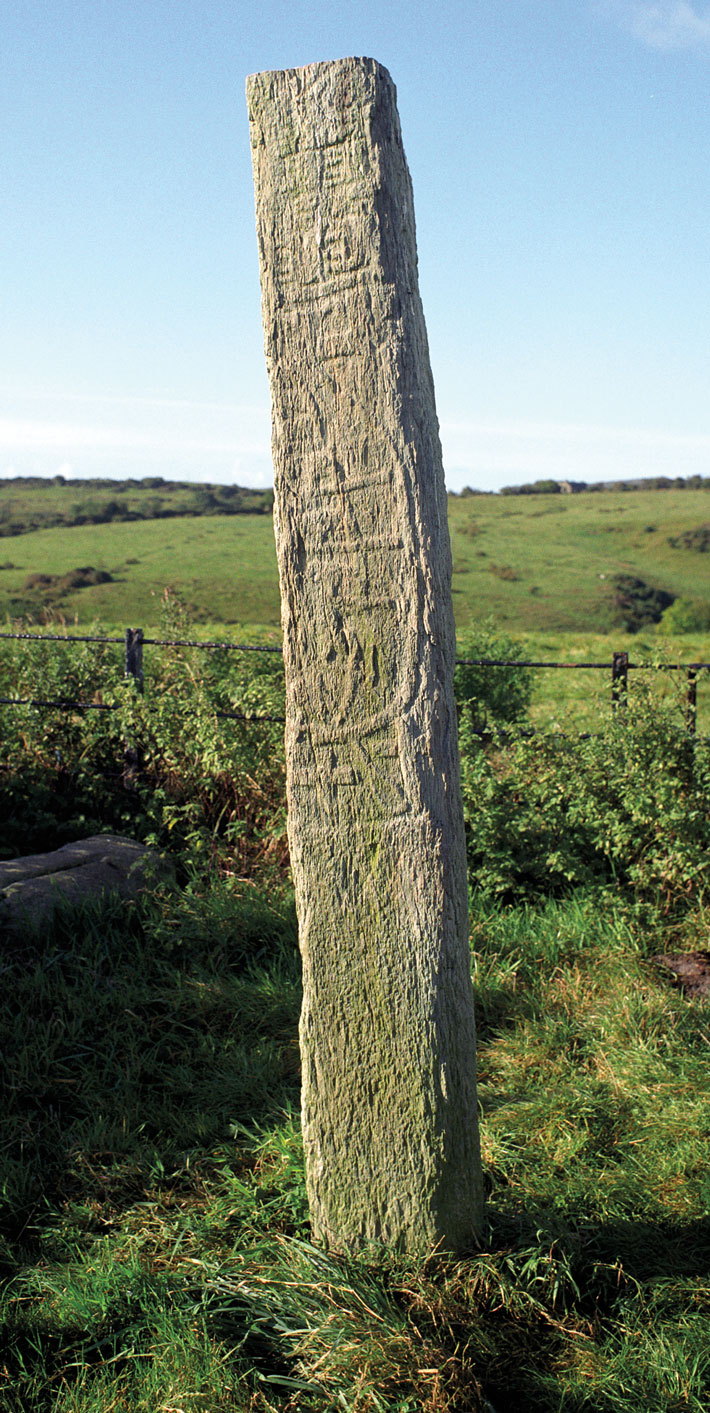
However, a growing body of evidence grounded in environmental archaeology has shown that people did make landfall in the Faroes well before the ninth-century A.D. Viking landnám. The most robust evidence, recently discovered in lake sediment cores by a team of researchers led by paleoclimatologists Lorelei Curtin of Bucknell University and Columbia University’s William J. D’Andrea, has shown that sheep left unmistakable hoofprints in the islands’ history centuries before Vikings arrived. “When you go the Faroes, you’re struck by this expansive landscape filled with cliffs and green rolling hills that seems untouched,” says Curtin. “But if you look closer, every single hill has a sheep trail on it. Sheep are grazing everywhere. They eat all the plants that grow higher than the knee that aren’t fenced in. The landscape has been transformed by sheep as much as by people, maybe more so.” Unraveling the impact sheep have made over time on the Faroes’ landscape, then, could be the key to understanding the history of the islands’ mysterious first settlers.
According to the Norse Saga of the Faroe Islanders, written in the thirteenth century, the earliest settlers in the Faroes were mainly Norwegian. They discovered the islands while escaping the tyrannical rule of King Harald Fairhair (reigned ca. A.D. 872–930). Excavations in the 1980s by archaeologist Steffen Stummann Hansen at sites such as a Viking longhouse in the modern town of Leirvík proved that Vikings did indeed reach the islands in the ninth century A.D. Hansen, however, believes that The Voyage of Saint Brendan and the learned treatise De mensura orbis terrae, or Concerning the Measurement of the World, written by the monk Dicuil in Ghent in A.D. 825, describe actual voyages made by Irish Christians who reached the Faroes, some of whom made the islands their permanent home. Hansen points to artifacts, Irish styles of church construction, and Faroese place-names that can best be explained by the presence of early Christian anchorites, deeply religious people who left secular society in search of solitude. Such anchoritic communities were founded off the coast of Ireland, including on the island of Skellig Michael, which was home to a population of monks of the type who may have inspired the earliest settlers of the Faroes. “They must have had their roots in the British Isles—the Irish Sea region and Scottish isles,” says Hansen. Many scholars believe that Norse people may have lacked the seagoing technology to reach the Faroes before around A.D. 800. People in the British Isles, by contrast, built vessels that would have been able to make the 200-mile ocean voyage well before then.
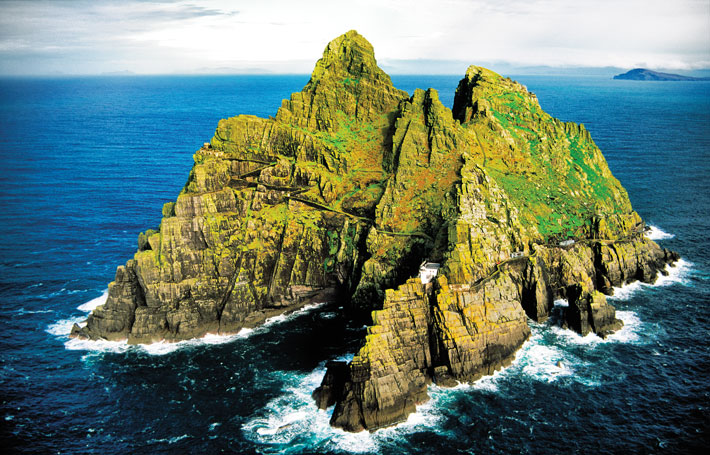

The chronicles of the purported oceanic travels of the sixth-century A.D. Saint Brendan to the “Island of the Blessed,” committed to writing in the ninth century by Irish monks, contain obviously fanciful passages, such as one that describes Saint Brendan holding mass on the back of a whale, but both Hansen and Sheehan believe they may contain at least a kernel of truth. A depiction of a boat that could have made the voyage to the Faroes is included on a carved monolith in County Cork, Ireland, near the site of a monastery that was said to have been founded by Saint Brendan. Sheehan also points to a description of an island visited by the saint called “The Paradise of the Birds,” which he believes faithfully describes the approach to a harbor on the most remote Faroese island, Mykines, which is known for being home to one of the largest puffin rookeries in the North Atlantic. “When you approach Mykines, it matches the description in The Voyage of Saint Brendan exactly,” says Sheehan, “and it certainly is an island of birds.”
Mykines is a word that has no identifiable source in Old Norse or Faroese. Sheehan believes the best etymological root for Mykines is muc-innis, an Old Irish word that can be translated as Island of Fog. There are only a few islands in Ireland bearing this name, but all, notes Sheehan, have early church sites on them. This leads him to believe the name may have had religious significance.
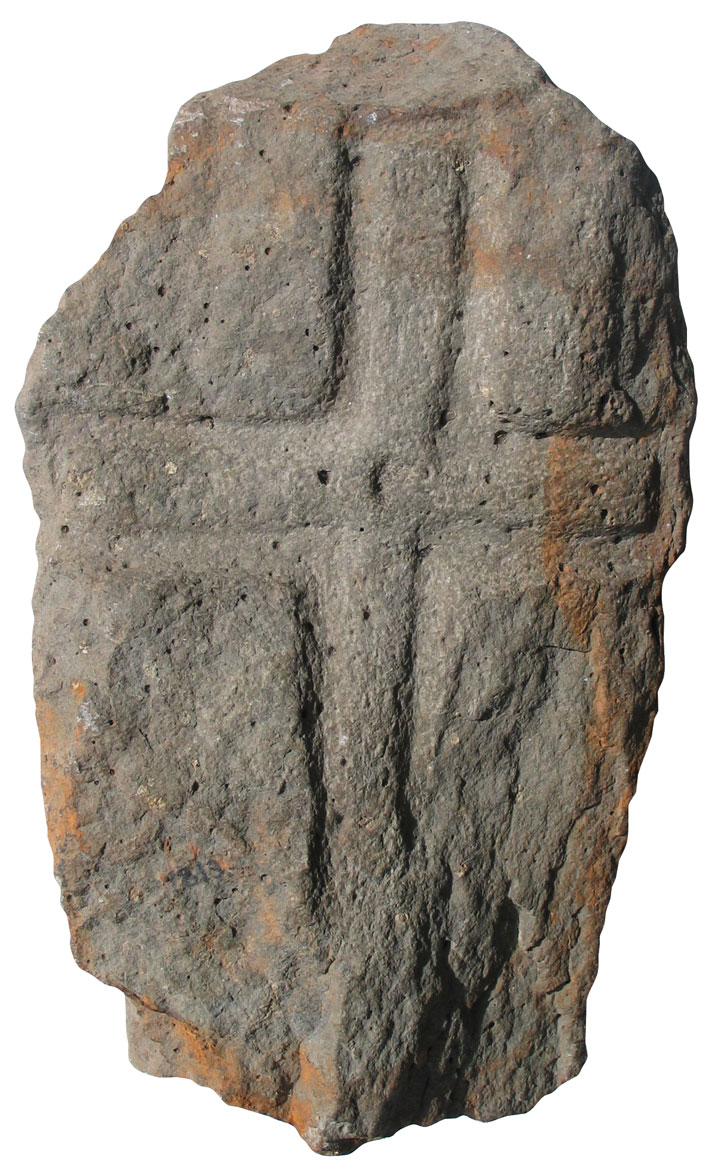
Dicuil’s De mensura orbis terrae is a more sober work than The Voyage of Saint Brendan. In this geographical treatise, Dicuil, who was a tutor to the children of the Holy Roman emperor Charlemagne (reigned A.D. 768–814), describes islands north of Scotland where Irish anchorites withdrew to lead ascetic lives focused on prayer in the centuries leading up to the Viking Age. He also mentions that these people were forced to flee the Faroes when the Vikings arrived.
Both Sheehan and Hansen believe, however, that the influence of the Irish church persisted in the Faroes after the arrival of the Vikings. They point out that early churches across the Faroes, such as one at the village of Leirvík, are enclosed by circular walls similar to those surrounding churches in Ireland and Scotland. “You don’t see these structures elsewhere in the Scandinavian world, not in Iceland or Norway, for example,” says Sheehan. Another possible link to Ireland is a set of a dozen stone slabs discovered on the Faroese island of Skúvoy that are inscribed with crosses similar to those found in early Celtic Christian iconography. The slabs were uncovered in the early twentieth century by local villagers, and there is no known context for the artifacts. Still, Sheehan and Hansen believe the connection to Celtic Christian imagery is too strong to be a coincidence. DNA studies of Faroe Islanders also show they share more DNA with people from the British Isles than with other Scandinavian people.
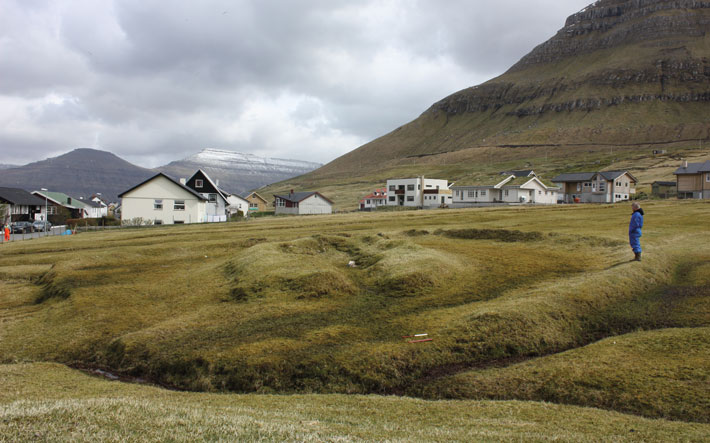
Faroese archaeologists have traditionally been skeptical that Irish texts, place-names, the cross slabs, and human DNA are evidence that early Irish settlers came to the Faroes. “These are intriguing ideas, but not definitive by any means,” says Sølvia, who points out that these lines of evidence could all be the result of later, well-attested connections between the Irish and Viking worlds. Sheehan and Hansen, however, believe the circumstantial evidence for early Irish settlers of the Faroes is sound. “I have always thought that if it walks like a duck and it talks like a duck, it’s a duck,” says Sheehan of the data they have gathered.
The first environmental data supporting pre-Viking settlement of the Faroes emerged after geologists sampled Faroese sediment cores in the 1980s. They found that pollen consistent with barley began to be deposited in the islands beginning in the fifth century A.D. Hard archaeological evidence backing up the idea that the Faroes were settled by the fifth century A.D. came from burned peat layers excavated near a Viking longhouse at the site of Á Sondum on the island of Sandoy. A team led by Durham University archaeologist Michael Church found two layers of peat ash containing charred barley grains—unambiguous evidence of human presence during at least two periods before the Viking Age. Radiocarbon dating of the ash layers shows that one was made of material burned sometime between the fourth and sixth centuries A.D., and the other between the sixth and eighth centuries A.D. Whoever created the ash layers probably took the ash from domestic firepits where barley was cooked and then placed it on a sandy surface to help stabilize the soil and control erosion, a common practice in the North Atlantic at the time.
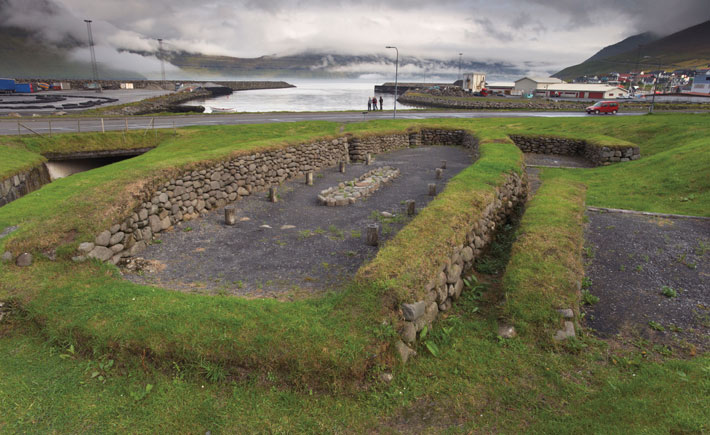
In 2015, a team led by D’Andrea visited the Faroes and took sediment cores from the bed of a dammed lake on the island of Eysturoy that covered a Viking Age farmstead known as Argisbrekka, which had been excavated in the 1980s. Paleoclimatologists by training, D’Andrea and his colleagues had been working on reconstructing the past climate in Norway, Greenland, and the Svalbard Islands. “That got us thinking about human navigation around the North Atlantic and led us to the Faroe Islands, where earlier researchers had noticed interesting transitions in vegetation from pollen analysis,” says D’Andrea. “We were wondering if we could rule out natural climate change as a reason for the changes.” To do so, the team was interested in using new chemical tools that allow researchers to identify lipid molecules known as fecal biomarkers, which are produced in the digestive systems of domestic animals—sheep, for example. They chose to sample the sediments from the bed of the lake covering the Argisbrekka site to maximize their chances of finding a human signature in the sediment cores. “We figured, let’s go to a site where we know people had sheep. If these tools work, then we should see them there,” says D’Andrea. “We also figured that on islands especially, people tend to build on top of places where people have already lived. If Vikings had used that spot, people before them may have also been there.”
Back in the laboratory, Curtin began analyzing the core. She found that abundant fecal biomarkers from domesticated animals appeared suddenly in sediments that dated to around A.D. 500. This was a clear signal that people had lived near the location of the lake at that time.
Strangely, radiocarbon dates from samples taken from higher up in the core were not more recent than A.D. 500 as would be expected, but were as much as 4,000 years old. “There’s this whole interval in the core where you can’t rely on the radiocarbon dates anymore,” says D’Andrea. “The simplest explanation is that when people showed up, they cut peat for fuel that contained old leaves and other ancient material. Some of this material was washed into the lake, so they introduced old carbon trapped in the peat into the sediments right after the sheep arrived.” Despite these anomalous dates, the identification by College of William & Mary paleoclimatologist Nicholas Balascio of a layer of volcanic ash in the core dating to A.D. 875 gave the team confidence that their radiocarbon modeling was accurate.
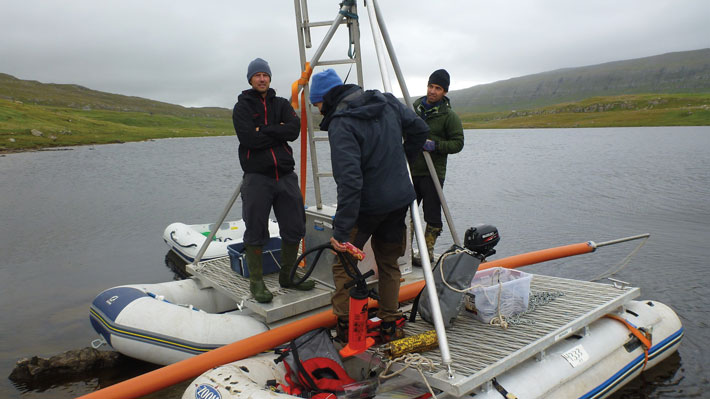
The team now had at least two independent lines of evidence that pointed to early settlement, but they weren’t satisfied. They aimed to identify the species of animal that was the source of the fecal biomarkers. “We wanted to put the nail in the coffin of this discussion,” says Curtin, “and we needed one more line of evidence.”
The team sent soil samples from the core to the laboratory of geneticist Beth Shapiro at the University of California, Santa Cruz, and asked her team to isolate mammalian DNA signatures. After many attempts, biologist Sabrina Shirazi was able to identify genetic sequences of mammals in the Faroese sediments. “I’ve worked with a lot of ancient and modern environmental DNA samples, and with any soil sample the majority of DNA is going to be fungal and bacterial,” says Shirazi. “Any DNA from mammals or other animals is going to be present in trace amounts, and that might mean you are getting 200 sequences assigned to a species in a sample—and that’s on the high side.” The Faroese samples were different. “It was the most I had ever seen for a vertebrate in any sample, on the order of a couple hundred thousand reads assigned to sheep in each of the samples.” Shirazi had identified another indicator that sheep were in the Faroes beginning in the fifth century A.D., and the data aligned perfectly with the fecal biomarkers, all of which indicated the presence of a large number of sheep at the site through time. “It was sheep, sheep, sheep,” says Shirazi. Plant DNA in the samples also showed that woody plants disappeared on the island around the same time that sheep were introduced and were replaced by grasses, likely due to extensive grazing.

D’Andrea’s team is now analyzing sediment cores taken from a number of different islands in the archipelago. “We’re interested in how people occupied other regions of the Faroes and how extensive the early arrival was,” he says. “We might find people weren’t using the landscape in the same way throughout the Faroes.”
Environmental data can only offer so many vantage points on the moment people first sighted the Faroes from their boats. “Our sediments don’t say anything about who these people were,” says Curtin. “We can’t say if they were Celts or early Norse, or someone else. We just can’t answer that question. Archaeologists have to find that out.”
For now, the identity of these early settlers remains a matter of speculation. Whether they were Celtic people in search of spiritual isolation in which to worship or Norse farmers looking for new pastures for their sheep is a question awaiting further research. Complicating matters, it’s possible there might have been even earlier visitors to the Faroes than the fifth-century A.D. Irish or early Norse, perhaps from the Shetland Islands. “It always seemed strange to me that you have people in the Shetland Islands 4,000 years ago and they didn’t reach the Faroes,” says D’Andrea. “I don’t think that we know human history as well as we think we do.” After decades excavating in the Faroes, Hansen is of the same mind. “We have Roman coins and pottery as far up as the northern parts of Shetland,” he says. “The Roman culture and mentality was an urban one. However, like any humans, they would have loved to explore the horizon, and I would be surprised if they didn’t try to pay a visit to the Faroes, too.”
Sølvia is a member of a National Museum team currently planning to carry out extensive excavations at a medieval church on the island of Streymoy. She allows that finding pre-Viking layers at such Christian sites in the future, while not the team’s focus, is at least a possibility. “When we dig,” she says, “we have to keep an open mind.”


